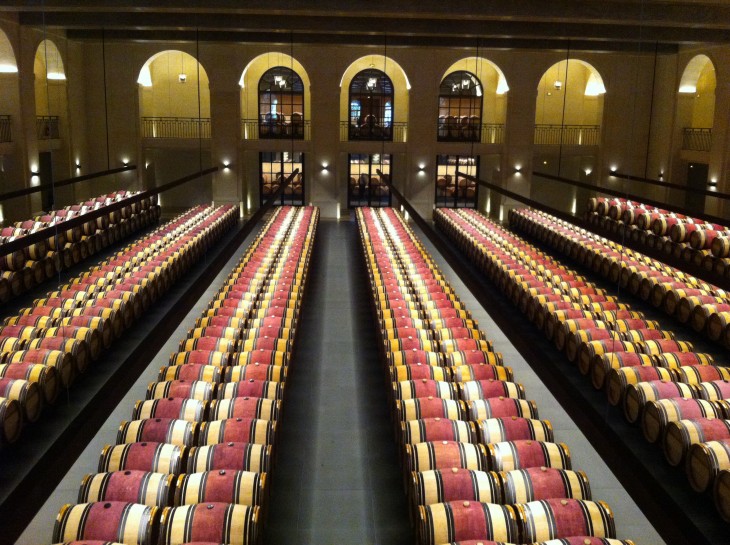
Any hotelier or restaurateur in China will tell you that the past several years have been tough – but there are signs that perhaps the worst is over.
Meiyu Li, Wine Director of Park Hyatt Beijing, says China’s falling demand for wine since 2012 has now stabilized. “I believe there will be increasing demand again in the future,” Li adds.
Restaurants and hotels are slowly recovering after being hard-hit by the Chinese government’s austerity measures. With cautious optimism, the wine trade is also creating strategies for the coming few years. In recent years, there has been a shift towards value, specifically when it comes to Bordeaux. “Sales of Bordeaux wines have been good,” Li says. “This is especially true for high-quality wines with competitive prices. Bordeaux still enjoys the highest level of recognition.”
Yang Lu, Corporate Wine Director of Shangri-la Hotels, who works in cities across China for the group, is also optimistic about the future of Bordeaux wine in China.“Bordeaux wines are something people will bank on,” explains Yang Lu. “And famous appellations are definitely more popular than satellite regions. But the market has changed over the years. While there is still strong demand for Bordeaux, there is much less demand for the super premium châteaux. Now, we are moving a lot of value-for-money products, such as the second wines of famous châteaux or smaller producers from the right bank.”
During the second quarter of 2016, the question at the forefront for many in the wine trade was: can Bordeaux make a comeback in China? Will 2015 en primeur help kickstart some enthusiasm for Bordeaux?
All signs pointed to a real possibility, with many importers hopeful that a renewed interest in buying wine futures might be reignited since the 2010 campaign. Even the importers not trading or investing in Bordeaux have an interest in how the leader of the imported wine category fares since there is residual impact on their business from market sentiment.
Effectively, the 2015 en primeur wrapped up just as Britain voted to exit the European Union at the end of June 2016. By then, there was more disappointment than satisfaction about the campaign. As Liv-ex’s insightful report summarized: “The latest Bordeaux vintage didn’t fulfill its potential in the international market,” and this was especially true in China.
Jeremy Stockman, General Manager of Watson’s Wine, the largest wine retailer in Hong Kong, was also optimistic at the start of the campaign. “This was a year for châteaux to make some friends,” says Stockman. “After the unbelievably high prices of 2010 followed by four less than stellar vintages, 2015 was a chance to offer a very good vintage at increased, but not outrageous prices. Sadly, some went for the enormous price hikes. Given the global economy and [decreasing] demand for luxury goods, I don’t think it was the right move to be putting prices up more than 40%, but some did. Demand for some of the wines as a result was very low.”
Nearly everyone I spoke to about 2015 Bordeaux en primeur felt disappointed. Paulo Pong, Managing Director and Founder of Altaya Group says, “After tasting the vintage, we considered the wines to be some of the most exciting young wines we have ever tasted. We were hoping for a great campaign since we like the wine so much. While we hoped the price increase would be modest, it got out of hand with many of the offerings and our customers rejected the large price hikes.”
Even American importers like Zachy’s, felt the en primeur campaign could have been better. Jeff Zacharia, President of Zachy’s, explains, “The campaign started out very strong with some great wines like Rauzan Segla and Pape Clément coming out with reasonable price increases and they sold very well. Both of these wines sold out. Some of the other successes of the vintage were Cantemerle, Clinet, Giscours and Haut Brion. Unfortunately, in the second half of the campaign, we saw some wines coming out at prices much higher than 2014 and there was pushback from consumers.”
Bordeaux châteaux and négociants were counting on Americans to come back to the en primeur market and many did. Zacharia adds, “It has been an exciting campaign and it is certainly our best campaign since 2010.” However, total volume and sales were a fraction of the 2009 and 2010 vintages.
2015 Bordeaux futures were a lost opportunity to bring back and attract new Chinese customers to Bordeaux. There was no spike in demand, but import volumes from France and Bordeaux continue to grow steadily in 2016 and those who work on the ground in China are hopeful about the future. The new norm for Bordeaux wines is more about value and quality than prestige or branding.
image copyright: the Drinks Business









